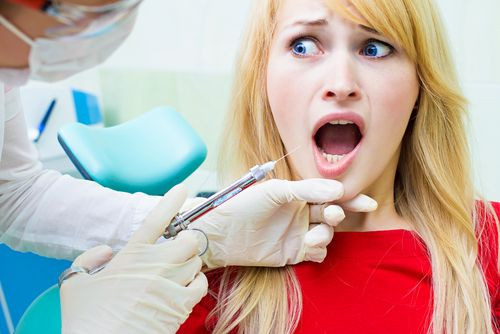Oral Hygiene: 6 Dental Care Myths That May Be Killing Your Pearly Whites

The truth of the matter is that any dental work can be nerve-racking. This is why we try to reschedule our six-month dental visits until we find ourselves cringing in the reclining chair at the dentist’s office. The anxiety and stress that surrounds dentists and dental health has circulated a cornucopia of dental myths to alleviate our dental woes.
These myths have been passed by word of mouth and become too deeply-rooted in our culture that we find it difficult to tell the difference between what is fact and what is fiction. These dental perpetuated myths can put our oral health in danger and prevent us from getting the proper dental care. It’s time to drill out the truth and sink your teeth into the most common dental care myths that may be killing your pearly whites.
Myth #1: Whiter Teeth Are Healthier Teeth
False: Your teeth may be white but this cannot show if there is an infection or cavities between the teeth. Pure white teeth do not equate to healthier teeth, although they should be on the whiter side. The natural color of teeth vary from one person to another where people with healthy teeth could have darker teeth than the next person.
Moreover, as we age our teeth become more discolored. “This is also the case with teeth when they begin to break down. This is why one often associates discoloration in the teeth with unhealthy teeth, however it is not always the case,” Dr. Kourosh Maddahi, celebrity cosmetic dentist in Beverly Hills, Calif. and recent best-selling author of “Anti-Aging Dentistry" told Medical Daily in an email.
Myth #2: Bleaching Your Teeth Is Dangerous
False: Bleaching is a popular service being used throughout recent years with technology allowing for patients to get whiter smiles faster and safer. Prior to 1990, the materials used to bleach teeth were acidic and would actually break down enamel, but now these bleaching materials are PH neutral and do not show damage to the enamel or root of the tooth. “When you are bleaching your teeth, you are simply oxidizing your teeth using carbamide peroxide so that light refracts more favorably off the enamel. What can be dangerous is aggressively high concentrations of whitening gels that can traumatize or shock the tooth,” Matthew Nejad and Kyle Stanley, dentists at Helm | Nejad | Stanley — Dentistry in Beverly Hills, Calif. told Medical Daily in an email. Prolonged use of bleaching could cause sensitivity, but once one ceases to use the trays the pain should go away.
Myth 3: Brushing Your Bleeding Gums Is Bad
False: Brushing is not only good on teeth, but also on your gums and tongue. Brushing these areas helps get rid of plaque which is what causes inflammation, gingivitis, and eventually gum disease. This plaque can cause the gums to become inflamed and bleed if it is not removed.
Dr. Joseph Banker, a dentist at Creative Dental Care, and a member of the American Academy of Cosmetic Dentistry and the Crown Counsel, told Medical Daily in an email patients should make sure “if you have sensitive gums, not to brush too hard.” He suggests to brush at an angle in order to avoid irritation of the gums. Brushing and flossing the surrounding areas will help keep the gum tissue clean.
Myth #4: The More Sugar You Eat, The Worse Off Your Teeth
Maybe: Sugar is bad for your teeth, but it’s not actually the sugar that is hurting them. Bacteria in the mouth needs processed sugar to survive, but according to Maddahi, if you don’t consume sugar but have poor oral hygiene habits, you will be prone to the same decay. Also, if you eat a lot of processed sugars you are more likely to incur a certain amount of tooth decay.
Overall, “the true cause of tooth decay is the combination of bacteria, sugar, and acid,” Nejad and Stanley said. Your gums can get irritated if sugar gets caught in between your teeth. It is important to brush or rinse after eating, especially after sweets, to get rid of the sugars and acids that can damage the enamel.
Myth #5: Placing An Aspirin Next To A Tooth Will Alleviate Pain
Maybe: Although aspirin only works when it is in the blood steam, Maddahi does contest if the pain comes from the gum, aspirin can temporarily relieve some amount of the pain there. However, if it is coming from the actual tooth structure, the aspirin would have to enter the blood stream because it cannot get through the enamel to get to the nerve. It is not advised to overuse aspirin or oral gels to relieve gum pain because they can lead to burn symptoms on the gums.
Myth #6: Flossing Is Not Important
False: Flossing is an extra step many of us tend to skip after brushing our teeth but this can lead to the build-up of bacteria. Nejad and Stanley said “If a patient doesn't floss, he/she is not cleaning almost 33% of their tooth surfaces that regular brushing can’t reach. Bacteria in those hard to reach places can cause gum disease, decay, and pain. Flossing is cheap, easy, and essential to oral health.” Flossing is an easy way to maintain good oral health.
Separate fact from fiction and chew on these dental care myths to avoid tooth decay.



























